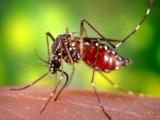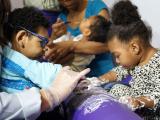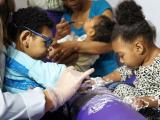As the US Centers for Disease Control and Prevention (CDC) nears the 1-year mark from activation of its emergency operations center (EOC) to respond to the Zika outbreak and its complications, Director Tom Frieden, MD, MPH, today warned that the fight against the virus is not over.
CDC reviews key Zika steps
In an early online edition of Morbidity and Mortality Weekly Report (MMWR), CDC officials reviewed 10 critical contributions that followed in the wake of its Jan 22 EOC activation.
"Fighting Zika is the most complex epidemic response CDC has taken on, requiring expertise ranging from pregnancy and birth defects to mosquito control, from laboratory science to travel policy, from virology to communication science," Frieden said in a press release.
The CDC's list of accomplishments reflects the broad range of actions needed to understand the complications of the disease, along with how to battle the mosquitoes that spread Zika, the agency said. Some are actions that CDC officials would typically take for any disease outbreak, such as issuing travel guidance, publishing clinical guidance for clinicians, developing and distributing lab tests, and conducting surveillance.
The Zika outbreak, however, also required other steps, including monitoring the blood supply, improving access to contraceptives, implementing mosquito-control strategies and developing best practices, and playing a key role in intensive research that established a link between Zika and birth defects, as well as with other complications such as Guillain-Barre syndrome (GBS).
The CDC said the work will continue, with protecting pregnant women and their babies as the top priority. "CDC experts in every field will continue to protect women and their families from the devastating complications of this threat," Frieden said.
Other Zika updates
- Though Colombia is the second worst-affected country, the way it investigates Zika-linked microcephaly cases may partly explain why levels of the birth defect appear to be so much lower than in Brazil, the Wall Street Journal reported yesterday. Brazil reports suspected cases, then investigates each case, and so far officials there have confirmed 2,228 Zika-linked microcephaly cases. Colombia, in contrast, reports cases only after confirming the birth defect, then confirming a link to Zika. Currently, Colombia has 67 such cases, but officials quoted in the story say the number is expected to rise sharply in the coming months, though it may not reach Brazil's level.
- The World Health Organization (WHO) in its weekly Zika situation report yesterday said no new countries have reported local Zika spread for the first time and no countries reported their first Zika-linked microcephaly cases. The organization said, however, that the French Caribbean territory Saint Martin reported its first GBS cases, raising the number of countries or territories reporting the complication to 21.
- The Pan American Health Organization (PAHO) said yesterday in its update that most regions in the Americas are showing a decreasing Zika trend, but there are some pockets of increased activity. They include Panama, Anguilla, and a few locations in Bolivia and Peru.
- The CDC said today in its latest case total update that the United States now has 4,808 Zika cases (52 more than the previous week), 216 of them acquired locally. US territories have now piled up 34,841 local Zika cases, 247 more than the week before.
See also:
Dec 30 MMWR report
Dec 30 CDC press release





















